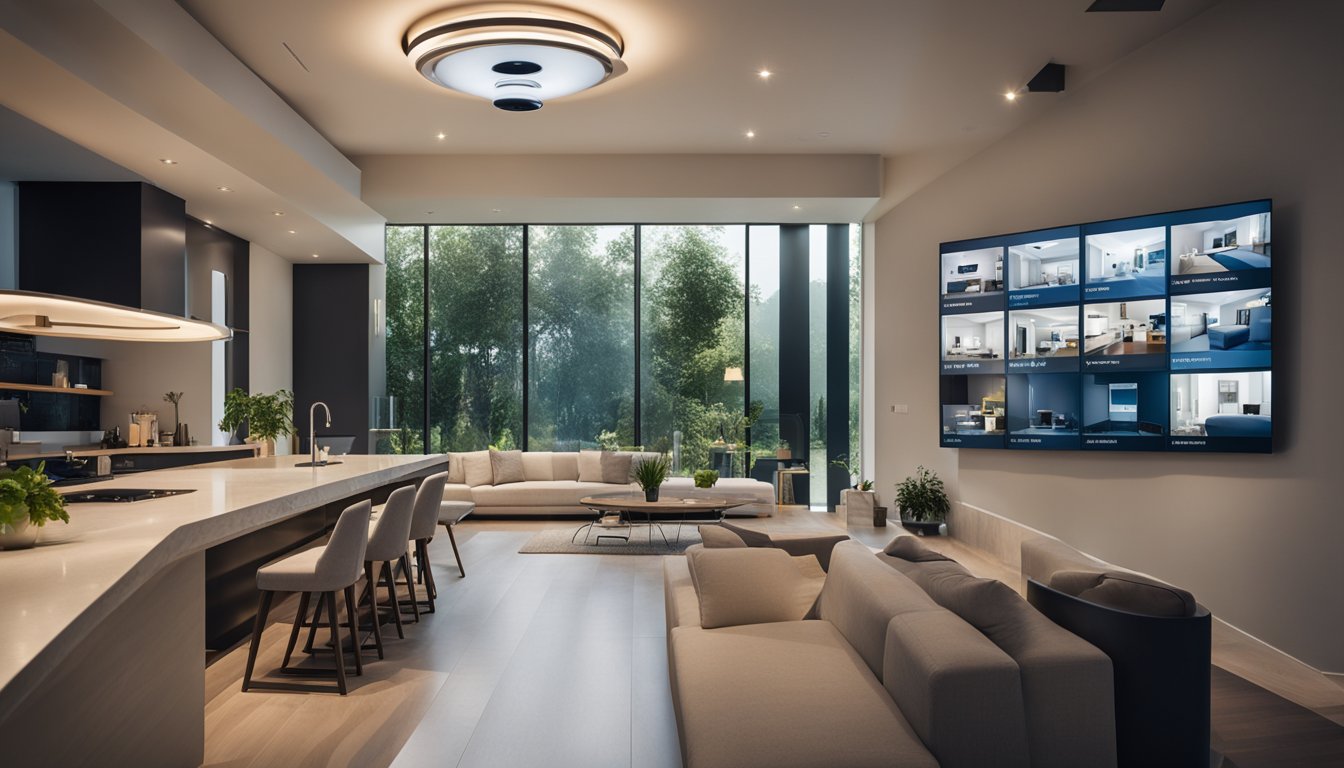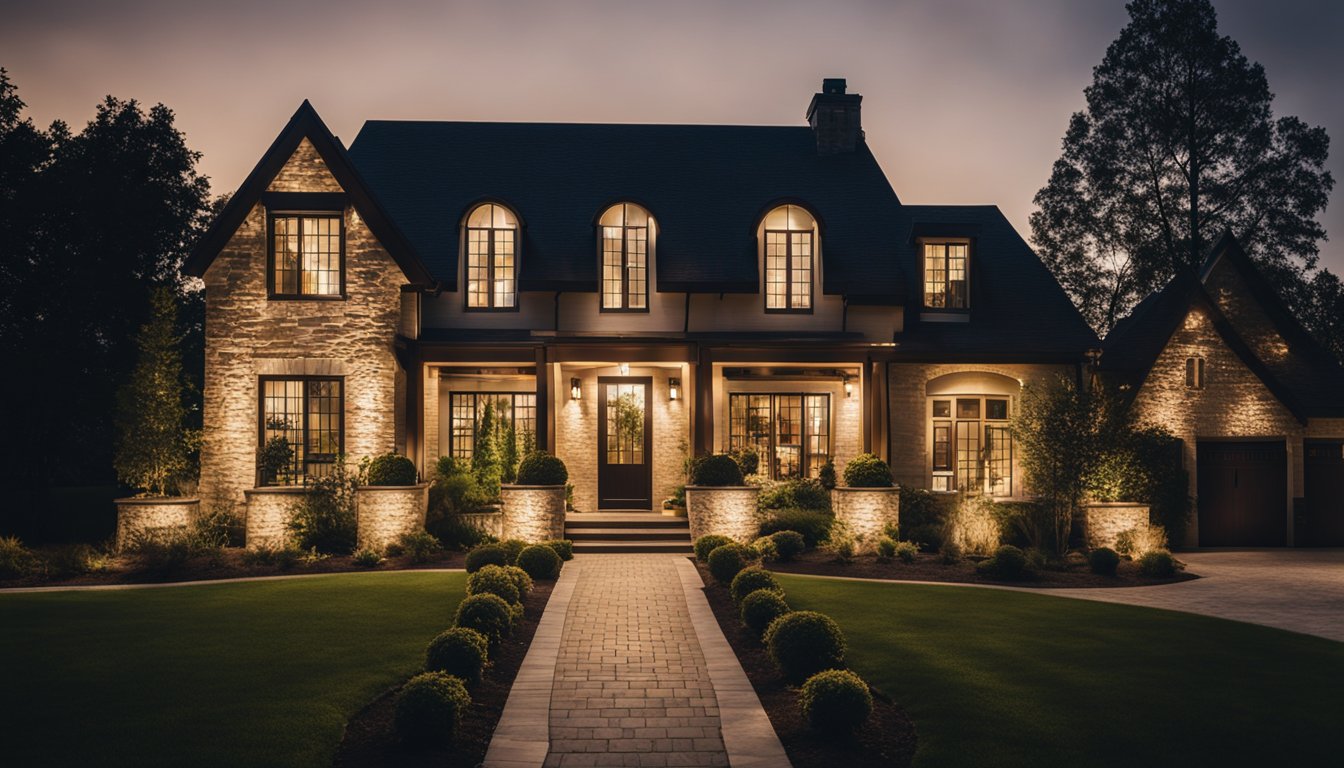Late updated: 03 Apr 2025 09:04
Written by: Elena Prescott
Enhancing Home Security With Simple Lighting Solutions: Effective Strategies for Safer Living
In today's world, ensuring the safety of our homes is a top priority. One of the simplest and most effective methods to enhance security is through lighting. Proper lighting can deter potential intruders and improve the visibility around your home, providing peace of mind. By strategically placing lights around dark areas and entry points, we can significantly reduce the risk of unwanted incidents.

Exploring various lighting options is crucial for maximising home security. From traditional LED lights to advanced smart lighting solutions, there are numerous ways to illuminate our surroundings and keep them safe. Incorporating smart lighting systems can even optimise our security by allowing remote access and automation features.
Key Takeaways
- Effective lighting deters intruders and enhances home security.
- Smart lighting solutions offer optimised security features.
- Integrating technology can improve monitoring and control.
Fundamentals of Home Lighting Security
Effective home lighting is critical for deterring intruders, illuminating potential hiding spots, and integrating with smart technologies. By understanding these aspects, we can significantly improve our home’s safety. Security lighting systems often involve outdoor fixtures, motion sensors, and smart technology.
Role of Lighting in Home Security
Lighting plays a vital role in home security by deterring potential intruders. Bright, well-placed outdoor lighting eliminates dark areas where criminals might hide. Motion-activated lights are especially effective. When sensors detect movement, the sudden illumination can startle and expose intruders, reducing the likelihood of a break-in.
Outdoor lighting also includes pathways, driveways, and entry points. These areas, when well-lit, are less attractive to burglars. Lighting not only protects against intruders but also provides safe passage for us during nighttime hours. Properly installed lighting systems, combined with basic security systems, significantly enhance our home security.
Advantages of Smart Lighting for Safety
Smart lighting systems add another layer of security by integrating with smart home technology. We can control these lights remotely via mobile apps, allowing us to appear at home even when we’re not. Timing schedules and randomised lighting patterns further confuse potential intruders.
Smart lighting can also include environmental sensors like those that monitor weather conditions, optimising energy use and system efficiency. Some systems integrate with security alarms to trigger lights during an alert, drawing attention to the premises. This technology not only improves security but also offers convenience by automating our routines and responses.
Integrating Smart Technology for Optimised Security

Incorporating smart technology into our lighting solutions can significantly enhance home security. By using smart bulbs, voice control, and central hubs, we can not only improve safety but also the convenience and efficiency of our home environments.
Utilising Smart Bulbs and LED Options
Smart bulbs can transform the way we secure our homes. These devices enable remote access, allowing us to control lights from anywhere via a smartphone. This improves the user experience by providing flexibility and peace of mind.
Energy-efficient LED bulbs are not only cost-effective due to lower energy consumption but, when integrated into a smart home system, they can be scheduled to mimic daily activity. This creates the illusion of occupancy, deterring potential intruders by making it seem like someone is home. Moreover, we can synchronise them with sensors to trigger lights based on detected movement, further elevating security measures.
Voice Control and Home Automation
With voice control technology, such as Amazon Alexa or Google Home, home automation becomes increasingly seamless. By issuing voice commands, we can easily manage lighting systems, which enhances convenience and accessibility. Imagine the security implications: we can quickly turn on lights without needing to be physically present in a room.
These systems provide a robust layer of security, allowing us to activate other devices like smart locks or cameras. When integrated, these technologies streamline our ability to respond promptly to potential threats or disturbances, boosting our capability to manage safety in real-time.
Synchronising Devices Through a Central Hub
A central hub acts as the brain of our smart home security system. By synchronising devices through this hub, we create a cohesive network that facilitates better energy management and streamlines our security efforts.
This network allows for the integration of various smart devices, including cameras, smart bulbs, and sensors. With such a setup, our entire home security system can be monitored and controlled from a single interface. This simplifies the user experience, offering enhanced remote monitoring capabilities and enabling us to react swiftly to any security threat. Leveraging the Internet of Things, this setup provides a sophisticated layer of protection for our homes.
Frequently Asked Questions

Choosing the right lighting for home security can make a significant impact on deterring potential intruders. Understanding the role of technology, cost-effectiveness, and strategic placement can enhance safety and keep our homes secure.
What are the best outdoor lighting options to deter burglars?
For outdoor security, bright and consistent lighting is key. LED floodlights are advantageous due to their energy efficiency and longevity. Motion-sensor lights startled intruders and are cost-effective. Ensuring these lights are placed at strategic points, such as entryways and dark corners, can discourage potential threats.
How do motion-sensor lights contribute to home security?
Motion-sensor lights play a crucial role by automatically illuminating when movement is detected. This unexpected light can deter intruders, as they prefer dark, unlit areas. Installing these lights near entrances and pathways increases security without requiring constant usage, saving energy in the process.
Can smart lighting systems be integrated with home alarm systems?
Yes, integrating smart lighting systems with home alarm systems is an effective security measure. These systems can be programmed to simulate occupancy, even when the house is empty, by controlling lights remotely. In case of an alarm trigger, the lights can be set to flash or turn on automatically, drawing attention to the property.
What are the most cost-effective security lighting solutions for homeowners?
LED bulbs are one of the most cost-effective choices due to their low energy consumption and long lifespan. Solar-powered lights present an economical option for outdoor areas, utilising sunlight during the day to power lights at night. Combining these with motion-sensor lights minimises energy use and expense while maintaining security.
How does the placement of external lights enhance property safety?
Well-placed external lights can significantly enhance safety by eliminating dark spots where intruders might hide. Key areas include doorways, windows, pathways, and the perimeter of the property. Consistent illumination prevents potential intruders from finding cover, while also making navigation safer for residents and visitors.
What should be considered when installing security lighting to ensure maximum visibility around the home?
When installing security lighting, consider the light's brightness, coverage area, and angle. Overly bright lights can cause glare, while insufficient lighting leaves areas in shadow. Adjusting the light angle and ensuring a clear, unobstructed path can maximise visibility. Additionally, regular maintenance ensures lights remain functional and effective over time.
